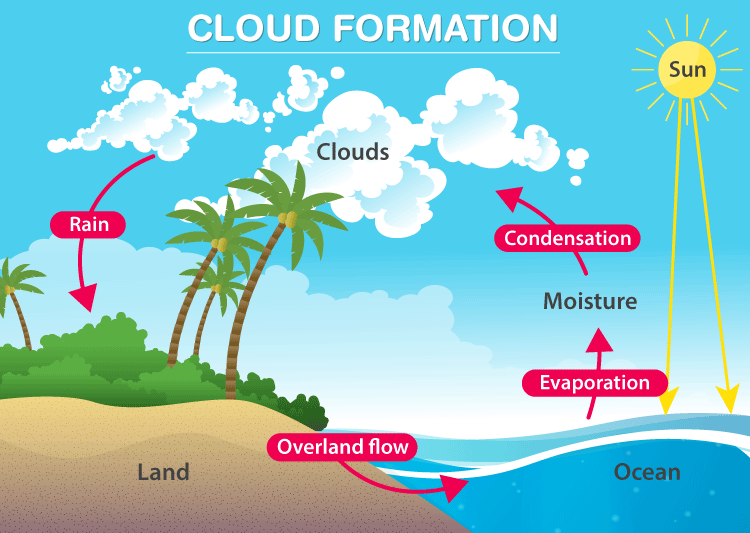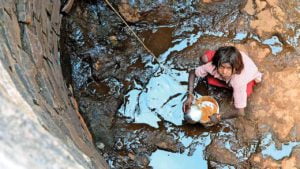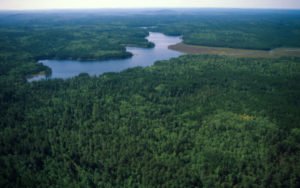- Introduction to Clouds Formation
- What are Clouds?
- Different Types of Clouds
- Middle Level Clouds
- Low Level Clouds
- Clouds With Vertical Development
- Complete Cycle of Clouds Formation
- Why are Clouds Important?
- Interesting Cloud Facts
- Clouds Etymology
- Some FAQs Related to Cloud Typess and Their Formation
- Final Thoughts Related to Cloud Types and Their Formation
Introduction to Clouds Formation
If we have to talk about two of the most important things for survival then it has to be air and water. Air is present all around us and with the help of plants oxygen keeps on renewing on its own. But have you ever thought that we use water in a very huge amount regularly and it never ends? Because it is also sell renewing. We all know that the only two ways by which water keeps on adding gin this nature are underground water and rain. But very few people know how clouds are formed and then rain takes place. In nature, clouds and all the other things have a proper formation cycle.
In this article, we are going to talk about cloud types and their formation. You will get to know about all the continuous steps that keep on taking place in nature for the smooth flow of things and resources in the environment. It will show you how beautiful and systematic our nature is.
What are Clouds?
In command language, it can be said that clouds are the white fluffy thing found and seen in the sky and leads to rain. But if we talk in a proper language then clouds are much more than this. In meteorology, a cloud is an aerosol consisting of a visible mass of minute liquid droplets, frozen crystals, or other particles suspended in the atmosphere of a planetary body or similar space. Water or various other chemicals may compose the droplets and crystals.
Clouds are formed by the collection of droplets that evaporate from the environment and then reach the sky. When all their droplets come together they form clouds. Clouds do not have a colour of their own but appear white to us because of the reflected and scattered sunlight against the sky. Sometimes a cloud can look grey or almost black because they get too bulky with droplets and then leads to rain. Clouds are a really important part of nature and contribute to the survival of living organisms.
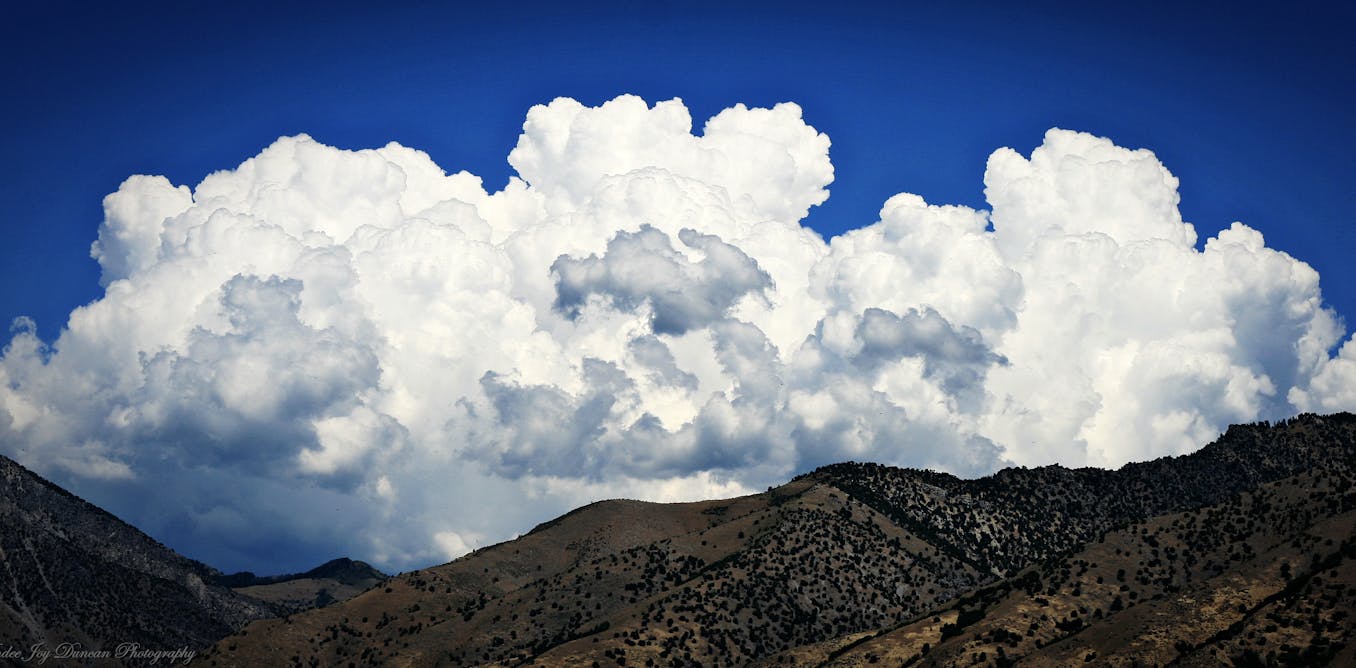
Different Types of Clouds
Take some time, go to your terrace and try to observe the sky and clouds in it. You will be able to see a lot of different patterns of clouds in the sky. There are many different types of clouds and they are differentiated based on their size, pattern, and the level on which they are found.
Cloud Type – High Level clouds
The sky is practically infinite and clouds are found on many different levels. Some clouds are found on a high level. These clouds are found at elevations of 20,000 feet (6,000 meters) and higher. The cold air at these elevations causes the small cloud droplets to freeze into ice crystals. High clouds are mainly known for their scenic beauty and spectacular effects they give in the sky especially during mornings and nights. The ice crystals act as prisms and cause light to separate into its many colors. That is why they are mostly bright. Three different types
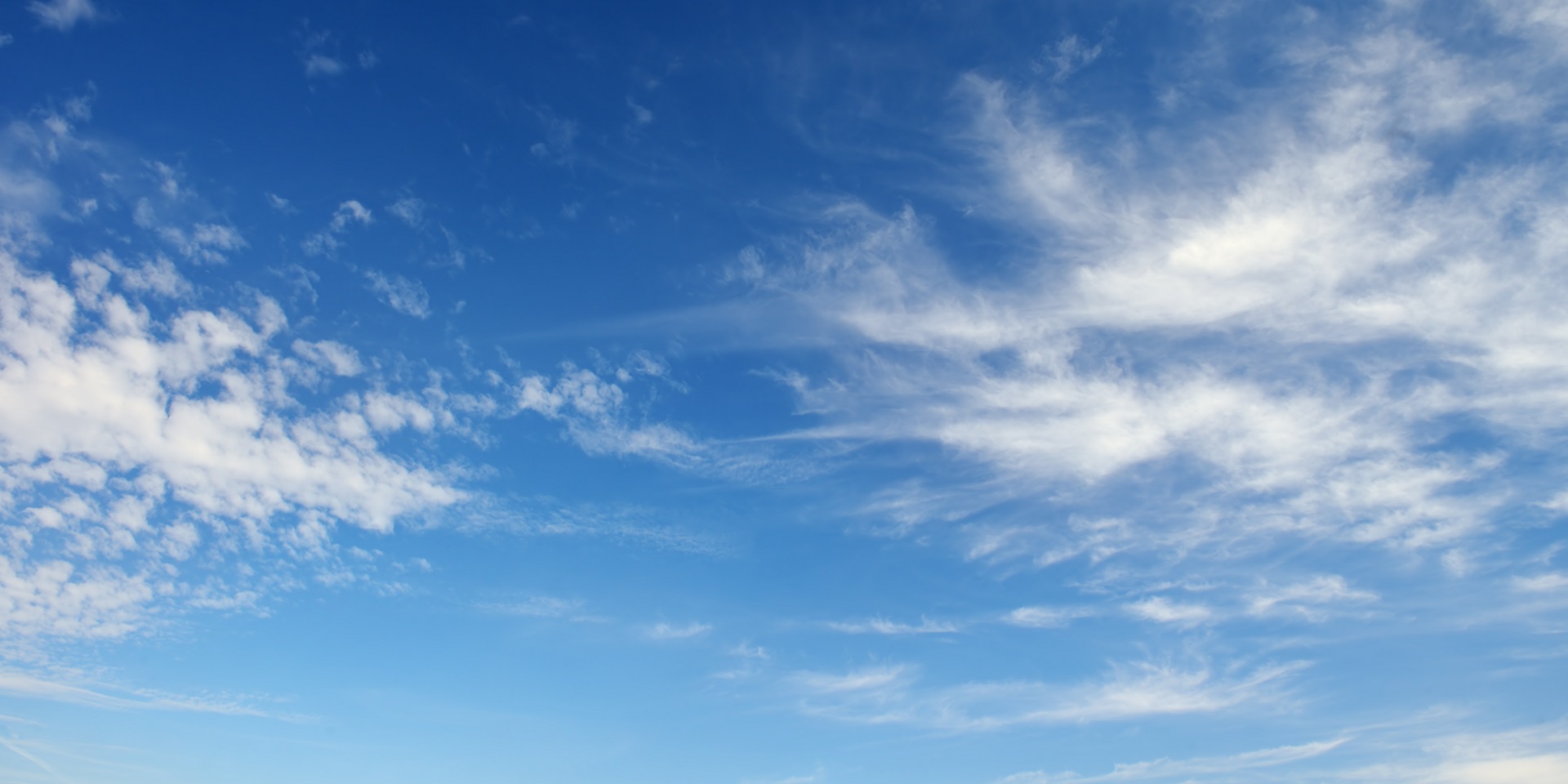
Cloud Type – Cirrus
Cirrus clouds are like the thin crust of clouds and look like a breeze of the layer. They are short, detached, hair-like clouds found at high altitudes. These delicate clouds are wispy, with a silky sheen, or look like tufts of hair. They look extremely beautiful and their beauty increases even more during sunset when light reflects through them. They are an indicator of fair and pleasant weather.
Cloud Type – Cirrostratus
Cirrostratus are transparent high clouds and they cover large areas of the sky. And appear circular and spreads in the sky like a sheet. Cirrostratus is usually located above 5.5 km (18,000 ft). They also mean that the weather is very pleasant and breezy.
Cloud Type – Cirrocumulus
The last high-altitude clouds are Cirrocumulus. They include a small number of liquid water droplets and also have ice crystals in them. They look like small dots of clouds spread across the sky. These clouds usually occur at an altitude of 5 to 12 km.
Middle Level Clouds
Then comes a little lower level and other types of clouds are found in this layer. These clouds are neither in the lowermost layer of the sky nor in the uppermost layer. The middle clouds form at elevations ranging from about 6,500 feet (2,000 meters) to 20,000 feet (6,000 meters). Because these clouds are lower than the high-flying type, they can consist of both water droplets and ice crystals. Mentioned below are the two different types of clouds that are are part of this level:
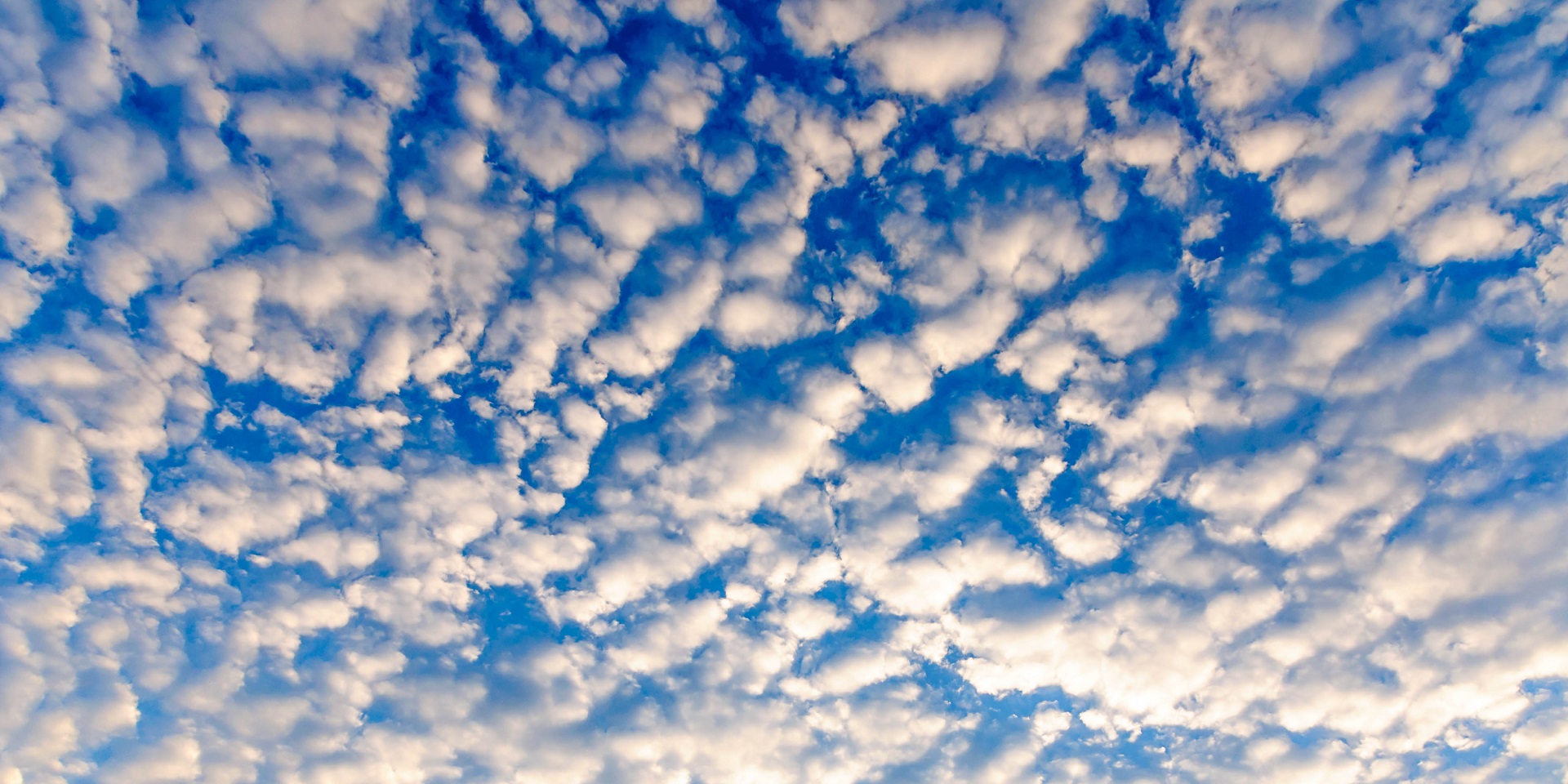
Cloud Type – Altostratus
Altostratus clouds are mid-level, grey or blue-grey clouds that usually cover the whole sky. And they shine brightly when sunlight and moonlight pass through them. These clouds often form ahead of a warm or occluded front.
Cloud Type – Altocumulus
Altocumulus clouds are small mid-level layers or patches of clouds. Their some is usually round that clumps throughout the sky. They can also appear very big and fluffy at times.
Low Level Clouds
Then comes the bottom-most level of the sky, these clouds form at elevations below 6,500 feet (2,000 meters) and consist mostly of water, except during the winter when snow becomes a possibility. Clouds that are present at this level are largely possible for the rain. The clouds of this layer usually appear very huge and bulky in size. Three different types of clouds found in this layer are:

Cloud Type – Stratus
Stratus are low-level clouds and are uniformly layered throughout the sky. They may produce a drizzle or a small amount of snow. When you look up you can see different patches of clouds in different shapes. and patterns.
Cloud Type – Stratocumulus
Stratocumulus has a lot of characteristics like large dark, rounded masses, usually in groups, lines, or waves. And they usually present near a warm, cold, or occluded front.
Cloud Type – Nimbostratus
A nimbostratus cloud is a multi-level, amorphous, nearly uniform. They are usually dark in color and produce continuous rain, snow, or sleet but no lightning or thunder.
Clouds With Vertical Development
Till now we have talked about clouds that grow at their level only but some clouds grow from one layer to another. This happens when a cloud rather than growing horizontally start growing vertically. And then they reach from one level to another. These updrafts spread the moisture through a large column of the atmosphere, and the clouds appear to have a puffy, even tower-like structure.
Two different types of clouds that belong to this layer are:
Cloud Type – Cumulus
Cumulus is almost like cotton candy floating in the sky. They are very huge with a bottom flat. They are usually only 1000 meters (3300 feet) above the ground. When they grow too much they take the form of thunderstorm clouds.
Cloud Type – Cumulonimbus
They are clouds with a super flat base but a big back. In short, they are mushroom-shaped. They are the main clouds behind precipitation and are also associated with thunderstorms. These clouds are formed beneath 20,000 ft.
Here is a video that will help you in understanding different types of clouds in a better way and will also tell you about the different levels on which they are found.
| Cloud Types | And Their Height |
| High Clouds | 5 – 13 km (16,000 – 43,000 ft) |
| Middle Clouds | 2 – 7 km (7,000 – 23,000 ft) |
| Low Clouds | Surface – 2 km (surface – 7,000 ft) |
| Clouds with Vertical Growth | Surface – 13 km (surface – 43,000 ft) |
| Unusual Clouds | Can’t be classified by height |
| Contrails | 5 – 13 km (16,000 – 43, 000 ft) |
Complete Cycle of Clouds Formation
Clouds don’t need the support of any living organism for their creation as it is a natural and very essential cycle. But there are a lot of steps that go into their formation. You will be surprised to know how systematic nature is and one step leads to another. So all the steps of the formation of clouds are mentioned below:
Clouds Formation Step 1 – Creation of Pressure in The Environment
The first very important step in the formation of rainbows is the creation of pressure in the environment. It is created when two different types of air namely Warn air and Cold air starts blowing. A zone is created where both cool air and warm air come in touch with each other. This creates a huge pressure in the environment which needs to be cool down.

Clouds Formation Step 2 – Water Vapor Evaporates into the Air
Then comes the stage of evaporation. This happens when the sun reaches above a water body and then water starts getting up in the form of water vapour. Evaporation happens because of the heat of the sun and because of that heat the water converts into vapour. Vapour is light in weight and starts getting up. In summer evaporation takes place very easily as the sun is on a low level.
That is why water vapour is a part of the air. Most of our atmosphere is comprised of two main gases nitrogen and oxygen gas. Water molecules (H2O) are made up of two hydrogen atoms and one oxygen atom. Without the evaporation of water from water bodies, rain can not take place. Evaporation takes place because of heat and can catch water from any water body no matter the size of it.
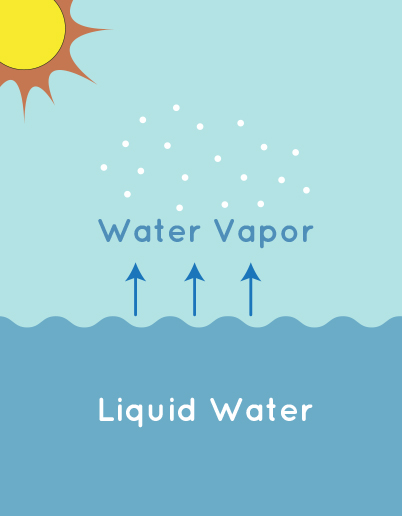
Clouds Formation Step 3 – Water Vapor Condenses to Form a Cloud
When water vapours reach the sky they start gathering together. When a few water vapours come together they become droplets and droplets are a mixture of water vapour and dust particles present in the air. After many droplets reach up the sky they start gathering. After that droplets start coming together to bigger structures and then they come together to make clouds. This is how clouds are formed as they are just big structures of water.
When excess raindrops come together the cloud turns black in color which means that rain is about to come.

In short, the first sun evaporates water from water bodies then all those vapours come together after condensing. Droplets are a combination of water vapour and dust particles. After that when a cloud gets heavy precipitation in the form of rain happens and water bodies get filled again. And then the same cycle continues.
If this cycle gets disturbed even a little the whole water cycle will suffer and a lot of problems can be caused to living organisms as rain helps in keeping the temperature of the earth in control and keeping it cool.
Cloud formation is a very systematic process and this video will help you in understanding that cycle by showing you how everything takes place
Why are Clouds Important?
Every natural activity is important on its own and leads to the balance of all things. Clouds are a very important part of the hydrologic cycle and keep the amount of water in nature at a balanced rate. They are the key regulator of the planet’s average temperature. They also cool nature in a way as they help in reflecting the sun’s energy. Water is the most important thing and rain is the way in which it gets renewed. If the rain will not happen then water bodies will not be able to get refilled and they will end up drying.
The rainy season is very important and clouds are the reason behind them. Some clouds contribute to cooling because they reflect some of the Sun’s energy called solar energy or shortwave radiation back to space. Cloud systems also help spread the Sun’s energy evenly over Earth’s surface.
Interesting Cloud Facts
Here are some facts about clouds that you might not know about:
- Clouds not only precepitate in the form of water but also in the form of snow, hail and sleet.
- Clouds can travel at more than 100 mph (160 km/h) with the jet stream.
- When two big and heavy clouds come in touch with eachother it can lead to loud and bright lightining.
- Clouds don’t have a color of their own and they appear white agints the color of the sky because of the light from the sun.
- Cumulus clouds look like fluffy tufts of cotton floating in the sky and are the most beautiful among all types of clouds.
- There are ten different types of clouds that can be seen in the sky.
- There are a type of cloud named shelf clouds and they apperan only in summers and srings.
Clouds Etymology
Etymology means how a thing gets its name or from which dictionary it is derived. The word cloud comes from the Old English word ‘cloud’ meaning ‘rock mass, hill’. This word first shows its existence back at the beginning of the 1300s. It was used to describe the visible masses of evaporated water seen in the sky because these masses looked a lot like rock formations. Then this word passed through a lot of modifications and now is finally known as clouds.
Not only do clouds have a very huge etymology but also they have a lot of references in different cultures. As different religions and cultures believe that different Gods are behind the phenomenon of cloud formation and rain and clouds are very important in different cultures as well.

Some FAQs Related to Cloud Typess and Their Formation
Here are answers to some questions that might come to your mind after knowing all about clouds and how they are formed.
Why art the clouds white in color?
It is a very common question that might come to your mind. The reason behind it is that clouds don’t have a colour of their own and they get it by the reflection of sunlight. This sunlight is scattered by much larger water droplets. These scatter all colours almost equally meaning that the sunlight continues to remain white and so making the clouds appear white against the background of the blue sky. Sometimes clouds also appear black and it happens when they become too heavy with water.
Which clouds have a vertical development?
Not all types of clouds grow vertically. In this, clouds rather than spreading start growing in a vertical form. A cumulus cloud that exhibits significant vertical development is called cumulus congestus or towering cumulus. But they are not yet a thunderstorm.
Any religious beliefs behind cloud?
Nature and religious belief are two very close things. Every religion and culture have their own belief behind the different happenings of nature. The same goes with clouds as they have their own beliefs. In Bible there is a mention of clouds, Greek literature believes that Aristotle is linked with clouds. In the Hindu religion, it is believed that Lord Inder is behind clouds and rain.
What do the three Latin root words for types of clouds mean?
There are different prefixes and suffixes used in making clouds and all of them are derived from the Latin dictionary. The very main Latin root word for clouds is Nimbus.
What are the 4 most common clouds?
Mainly there are ten different types of clouds. Differentiated on the basis of their formation, size, and level on which they are found. The four most common types of clouds are:
- Cirro-form
- Cumulo-form
- Strato-form
- Nimbo-form
Why are clouds and rain important for humans and nature?
Water is undoubtedly one o the most important thing for the survival of living beings. And rain is the only way by which it renews. If clouds are not formed and rain does not take place then the whole cycle of nature will be disturbed. Plants will not be able to get water, no vegetation will be possible, water bodies will not be able to refill them. Rain in the rainy season is extremely important to cool down the temperature of the earth. So if the rain will not happen it can lead to a lot of issues.
What are the average size of clouds?
When we look in the sky we can see a lot of different types and sizes of clouds. They can appear huge and fluffy in the sky. But the average size of a cloud varies between 20,000-30,000 feet. Usually, these clouds don’t get any bigger than 4-6 miles or 20,000-30,000 feet. But the huge thunder clouds are known as the cumulonimbus rise up to 60,000-70,000 feet or 12-14 miles.
Do all kinds of clouds lead to rain?
It is a general perception that all kinds of clouds lead to rain but it is not a fact. Only clouds that case rains are nimbostratus or cumulonimbus clouds. It is because they are low-level clouds and are found in the lowermost level of the sky. The prefix number or the suffix nimbus are low-level clouds that have their bases below 2,000 meters (6,500 feet) above the Earth. Clouds that produce rain and snowfall into this category.
Final Thoughts Related to Cloud Types and Their Formation
Learning is a continuous process and no matter how much we try we will never be able to know and learn about its every bounty. There are a lot of things and mysteries that still prevail in our nature and people are still looking for answers to them. But there are a lot of things that we know about and keep on surprising us from time to time. Cloud formation and rain are one such thing. It is an involuntary and continuous process that keeps on taking place and don,t need the involvement of any other creature in it.
This article will tell you all about the formation of clouds and you will also get to know about how one step leads to another and slowly reaches the end product. If you are a student and have cloud formation in your syllabus then you will get to learn a lot of things from this article. Even if you are generally interested in knowing about the working of nature then this is the article for you.
Share with your friends

